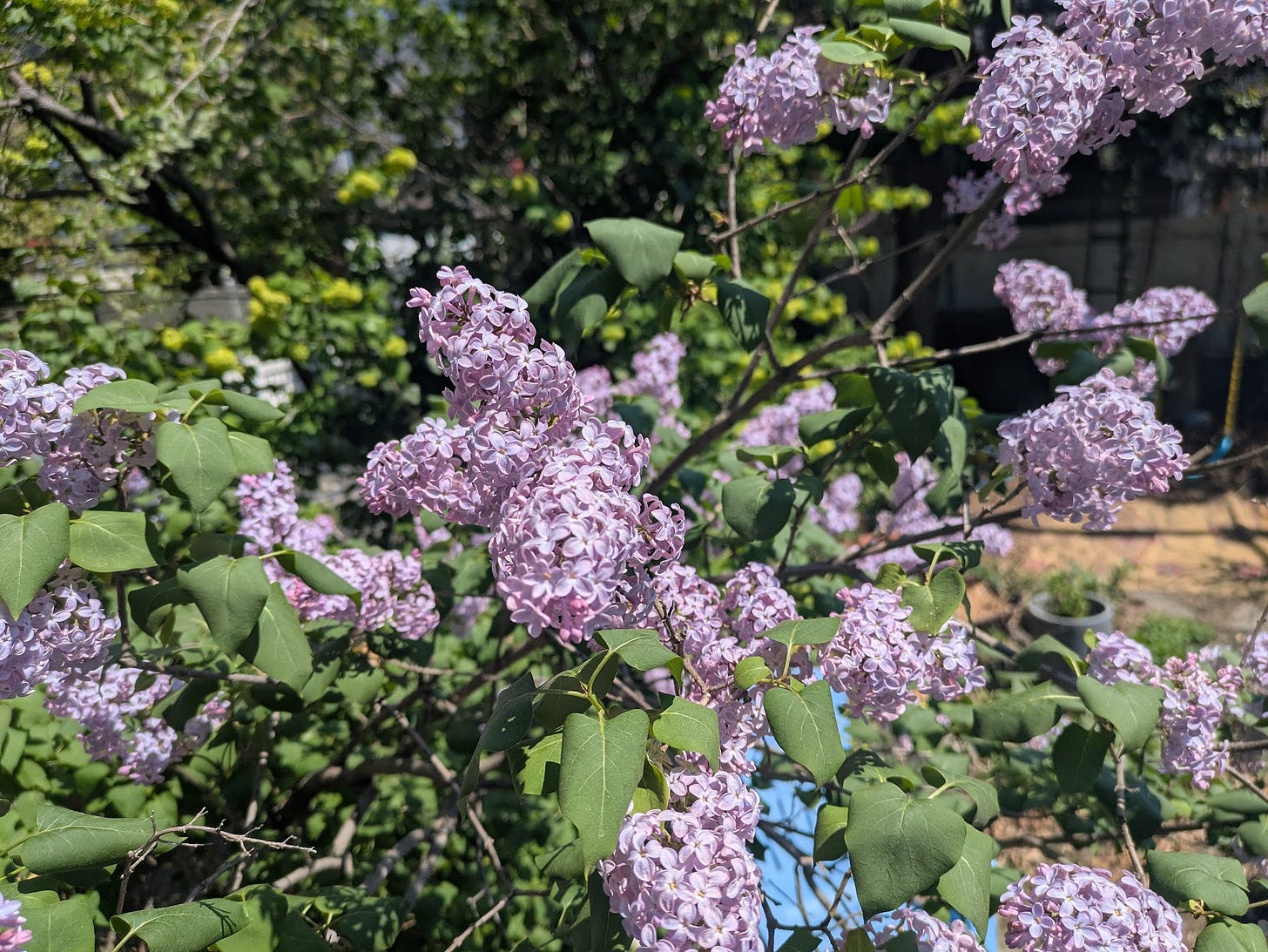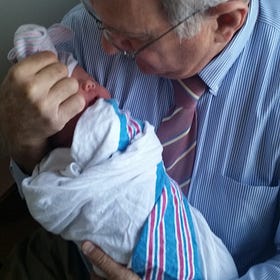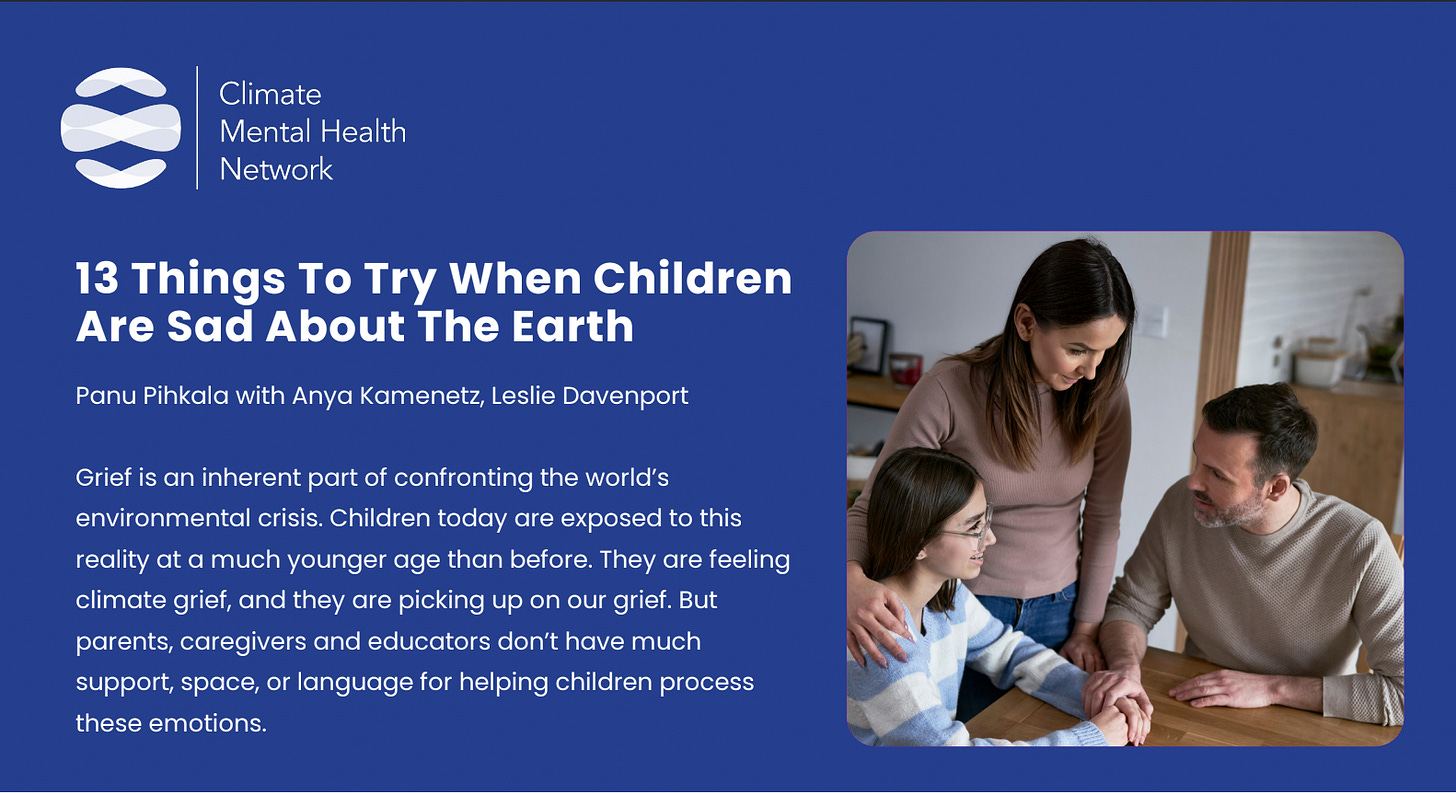Hello friends.
A quick editorial note—I had a beautiful experience last week thanks to you, faithful readers. I posted something kind of heavy, laden with unresolved emotion, and people didn’t open it right away. Then I posted a note about how that felt…and people responded by lifting me up, liking and sharing the original post much more than usual. Others were honest that they felt overwhelmed by it, which is important feedback! It all made me so grateful for this space, and for the opportunity to be in conversation with you; and resolved to be as helpful, artful and true as I can. As it would happen, I’m writing about grief this week, another not-obviously-appealing topic; if it’s for you right now, great, and if not, I promise I’ll be back with something lighter next week.
It’s spring!
The lilacs just past our deck are blooming, drenched in rich scent. Every spring when they come out I re-read Walt Whitman’s great poem “When Lilacs Last In The Dooryard Bloom’d.”, in which the coffin of Abraham Lincoln traces a dark path across the mourning nation:
Prais’d be the fathomless universe,
For life and joy, and for objects and knowledge curious,
And for love, sweet love—but praise! praise! praise!
For the sure-enwinding arms of cool-enfolding death.
It’s pretty goth!
But when he talks about “cool-enfolding death,” “sane and sacred death,” “dark mother always gliding near with soft feet,” I somehow find it deeply soothing.
Whitman loves life so much that he embraces the beauty of death even in the depths of grieving.
For the past five years, each spring also brings thoughts of my husband’s beloved aunt Nancy. She died on May Day, 2020. She was a world-reknowned dancer, teacher, editor and writer who co-created a profound movement practice known as contact improvisation. I always loved spending time with her; I knew her as a person of great clarity and playfulness. She was petite and strong, with a long braid swinging over her shoulder, wide-set eyes, and wide-set toes, too, because she was so often barefoot and using her feet.
Diagnosed with a serious illness, she navigated her last two years with startling grace, generosity, and intention. It awed me and gave me something to aspire to, in death.
What makes grief endurable, I think, is voice, time and place, seasons and rituals. They help us contain the uncontainable. Whitman can feel safe setting his grief down. He knows the lilacs will return, and with them, “thoughts of him I love.” Both are beautiful.
It feels so fitting that this spring, Climate Mental Health Network has just published a new guide to climate and ecological grief. Like the Climate Emotions Wheel, it’s made in collaboration with, and based on the research of, Panu Pihkala, an expert in eco-emotions at the University of Helsinki; I am a co-author along with Sarah Newman, the executive director of CMHN.
The guide includes a quick overview of emerging research on climate and ecological grief; different models of grief processing from different researchers; and a set of activities designed to get you to explore and express this grief.
Whitman was writing in the 19th century, when death was more a recognized and acknowledged part of life. Our culture today is so bad at making room for grief of any kind. I want to acknowledge the work of others who have come before us in opening up this conversation, like
, The Dinner Party, and Shoshanna Berger and BJ Miller’s book A Beginner’s Guide To The End, and the writers I quote in this post:Dying Is Absolutely Safe*
The Golden Hour: climate, children, mental health is a reader-supported publication. Please consider becoming a paid subscriber.
If we are bad at talking about death and loss in general, the grief we feel at the ongoing destruction of the natural world can be especially hard to acknowledge. It has a planetary weight.
What if spring doesn't return in recognizable form? What if the lilacs don't bloom?
As we review in the guide, climate grief is disenfranchised—not commonly or officially recognized. It’s not a personal loss, so sometimes it seems like it belongs to nobody. The losses are ambiguous, nonfinite, both tangible and intangible, complicated and lingering—like the gradual disappearance of snow in the winter, or the loss of a feeling of safety in one’s home because of regular storms. Some of the grief is anticipatory—it attaches to what we might lose in the future.
Young people especially may be grappling with shattered assumptions about the world and shattered dreams for their future.
Our grief may mingle with or merge into other feelings: guilt when we look at the world we are leaving our children, rage when we look at the leaders who brought us here, empathy when we regard others who are feeling the same sadness, and resolve to act.
I find all of these concepts so helpful for processing my feelings about the crises in the world at large, not just the climate, especially now. Panu references the work of Darcy Harris on “sociopolitical grief” among Black Americans in particular. Harris and her coauthors argue that this experience of collective grief tends to catalyze political and social action, as climate grief can also do.
Our guide also includes different models of processing grief, a set of suggested activities, and a short tip sheet for parents with ideas to try when our children begin to express sadness about a loss in the natural world.
Although the guide offers lots of ideas for what to do with grief, we’re not trying to get rid of our grief, or fix it. Or our children’s, even. We are trying to stop our grief from fixing us in place, from holding us down, stuck, unable to stretch, turn, explore the full possibilities of feeling, travel the full range of emotion.
I hadn’t recalled this, until I just looked it up, just now, but here are the last lines of Aunt Nancy’s obituary in the New York Times, from her lifelong friend and collaborator, Steve Paxton, about their last correspondence:
…She sent out a group thank you. “It was something about looking forward to seeing the lilacs bloom,” Mr. Paxton said. “I think she died the weekend that the lilacs bloom. I’m not sure if she saw them or not. They were a-blooming.”










Thank you for sharing these thoughts about the difficult condition and outlook for our world. Lilacs are a beautiful a beautiful metaphor, not only because they return annually, but the smell of lilacs early in the spring welcomes the rest of summer--and memories.
The Russian composer and pianist Sergei Rachmaninoff had to flee his homeland during the Revolution. A man of some means, he had to leave everything behind, including music and money. Before he left, he'd written a song called "Lilacs." https://www.youtube.com/watch?v=gaiAPSBRfdE
When he got to the U.S., he had to make his living playing recitals instead of composing. He's recognized as one of the greatest pianists. "Lilacs" was one of his favorite encores. You can hear both memories and looking forward to renew experiences to remember.
This is a beautiful reflection, thank you for sharing it. I read Walt Whitman’s poems last year when I got stranded in North Carolina during Hurricane Helene, and I wrote this poem that I would like to share, inspired by his work:
Do Not Build It
If I should be important enough
To merit a statue when I die,
Do not build it
Instead, go into the woods and find a mossy log
And sit in silence
Instead, take the money for stone and buy dinner
For the person with the cardboard sign on the street corner
And find out their name, and then name of their first love and their childhood best friend
Instead, sing to the moon at night
And do not care if you are on pitch
Instead, go to your love and trace the edges of their palm
As you walk down the sidewalk in the golden light
That makes even cigarette butts beautiful
Instead, live
For my monument is beating hearts and sweat-lined hair
And curses from careless lips
And dishes, done or undone